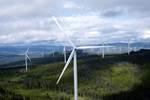Sino Polymer develops high-performance epoxy resin prepreg
Used in railway applications, the carbon fiber prepreg can be cured at 150℃ for 10 minutes, and is suitable for structural parts requiring Tg within 120-140℃.
Originally focused on aerospace and military application, Sino Polymer (Shanghai, China), has recently developed high-performance epoxy resin systems, including EN45545, a flame-retardant epoxy resin system for carbon fiber prepreg that can be used in railway applications. The system retains halogen-free and low smoke density/toxicity properties and a long shelf life.
Using this epoxy resin system, Sino Polymer says, its carbon fiber (T-300) prepreg has recently passed the EU EN45545-2 R1 test and reached HL3, the highest flame-retardant level. Further, the company notes the prepreg can be cured at 150℃ for 10 minutes, is suitable for structural parts requiring Tg within 120-140 ℃, retains a shelf life at room temperature (60 days at 21-23 ℃) and can be stored for up to 18 months at 18 ℃.
Sino Polymer has also developed systems for wind energy and marine applications, including two room temperature, fast-curing component epoxy resins to infuse with fiberglass for fabricating FRP wind turbine parts and boats, which can be cured in 1.5-2 hours, and two-component epoxy resins for carbon fiber wind blade spar caps using a pultrusion process. Other systems are available for processes such as hand layup and filament winding.
This post is courtesy of the CompositesWorld and AZL Aachen GmbH media partnership.
Related Content
-
Materials & Processes: Fibers for composites
The structural properties of composite materials are derived primarily from the fiber reinforcement. Fiber types, their manufacture, their uses and the end-market applications in which they find most use are described.
-
Plant tour: ÉireComposites, Galway, Ireland
An in-house testing business and R&D focus has led to innovative materials use and projects in a range of markets, from civil aerospace to renewable energy to marine.
-
JEC World 2022, Part 3: Emphasizing emerging markets, thermoplastics and carbon fiber
CW editor-in-chief Jeff Sloan identifies companies exhibiting at JEC World 2022 that are advancing both materials and technologies for the growing AAM, hydrogen, automotive and sustainability markets.











.jpg;maxWidth=300;quality=90)

